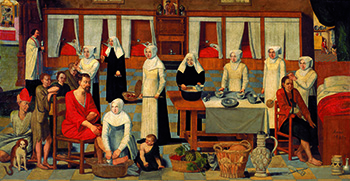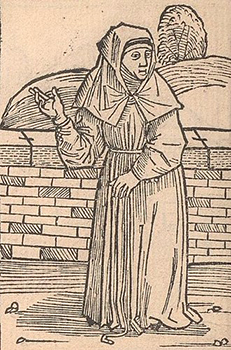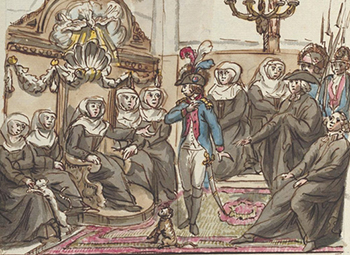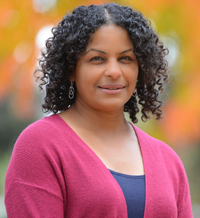From Our Archives
For earlier essays on this week's RCL texts, see Debie Thomas, Called to Restlessness (2022, 2019); Dan Clendenin, Isaiah’s Challenge to America’s Militarism (2016), Imitating Abraham (2013), Don't Worry About Your Life (2010), God Bless You, Tammy Faye! (2007), and Les Exclus (2004).
This Week's Essay
By Amy Frykholm, who writes the lectionary essay every week for JWJ.
Isaiah 1:16-17: “Cease to do evil; learn to do good.”
For Sunday August 10, 2025
Lectionary Readings (Revised Common Lectionary, Year C)
Psalm 50:1–8 or Psalm 33:12–22
Hebrews 11:1–3, 8–16
Luke 12:32–40
In the centuries-old conversation between Judah and Jehovah at the time of Isaiah son of Amoz, it was clear that the old ways were no longer working. Old practices were failing, even the most ancient traditions, the most revered festivals, the ways people communicated with God for generations. No matter how hard they tried — sacrifices and acknowledgments and hands stretched out in many prayers — it had all become empty. Their rituals were corrupted; they only cloaked despair and hopelessness. They were tiresome, even to God.
Oddly enough, it wasn’t a new ritual that was necessary for renewal. Not a fresh liturgical take or new worship music. Not even new kinds of sacrifices. There was one path and one path only, the oldest path called for in the people’s relationship to God: “learn to do good; seek justice; rescue the oppressed; defend the orphan; plead for the widow” (Isaiah 1:17).
To certain people observing the church in 12th-century Europe, a similar pattern was evident. None of the forms that the church had available suited the clarion call that they heard — perhaps directly from Isaiah — to “cease to do evil and learn to do good” (Isaiah 1:16–17). These people were called the beguines (and later, in the male form, the beghards). They began as iconoclastic individuals seeking an alternative way to live their faith. Available to most of them were two confining routes: marriage or convent. It was not at all clear that by these routes they could “learn to do good.” So they began to make another path.
Eventually they gathered together in houses called beguinages. While concentrated in Belgium and the Low Countries, there were beguinages in Greece by 1230 and Eastern Europe by the late 13th century. In fact, beguinages spread throughout Europe wherever there were textile industries in wool and silk. The largest beguinages housed thousands of women, the smallest one or two.
 |
|
Anonymous, Care of the Sick at the St. Elisabeth Hospice (1639).
|
Key to the functioning of a beguinage were three things: the freedom to come and go; a deep commitment to “seek justice, rescue the oppressed, defend the orphan, plead for the widow;” and a spirit of mutual support. The beguines set the rules for themselves, worked together, prayed together, preached to each other, and reached out to their communities to support the most vulnerable. They founded hospitals and schools. They wrote and copied manuscripts, often in the vernacular, so that they could be widely shared.
Their approach was profoundly local; as they embedded themselves in particular places, they made decisions based on the particularities of that context. Yet universally, they were set apart by embracing a spirituality without vows and without walls.
Any beguine who joined a community was free to leave at any time — and take her property with her. All were dedicated to service and mutual aid. To support themselves they wove and sold cloth, managed properties, baked bread, and tended gardens. They were well known to their neighbors, who may have given them the disparaging name “beguine” — no one knows the exact origin of this word. It seems to mean: women who live outside the rules and we don’t know what to call them. Eventually they were supported by their non-noble and non-clerical neighbors in the form of small gifts and generous bequests.
Jessie Harriman writes, “The beguine mystics were women with their eyelids licked open by God.” They sought new images and words alongside new ways of living. Like the prophet Isaiah, they took the tradition for its word, “peer[ed] down inside its cavernous shell," and wondered what in here is still “worth saying, worth pointing to”?
 |
|
Matthäus Brandis, Print of a Beguine from His “Des Dodes Dantz” (1489).
|
Many historical theories address the rise of the beguines. There was a numerical imbalance favoring women in Europe at this time, as the Crusades had emptied the continent of many men. Nunneries were turning away candidates and there weren’t enough men to marry. But often overlooked in these historical theories is the simple agency of the women themselves — the decision to make another way when the old ways no longer served.
While these women created countless manuscripts, they did not leave a significant recorded history of themselves. They didn’t feel it was necessary to label themselves, to claim an order or an identity. They didn’t seek (and didn’t receive) any official acknowledgement from the church. Many questions about who they were and how they lived are left unanswered by the utmost authorities — themselves. Sometimes they simply called themselves “Friends of God.”
Women living outside the rules were not especially tolerated. They threatened the status quo and did so publicly. After only about 100 years of their existence, the first beguine died at the stake. Her name was Marguerite Porete, and she wrote a work of meditations on mystical prayer in Old French called The Mirror of Simple Souls. This book was both widely circulated and widely criticized for about 20 years before she was finally condemned by local clergy and burned at the stake. Other beguines were jailed, forced into convents, had their property confiscated, and were killed by various means. In 1312, two years after the death of Marguerite Porete, beguines were officially condemned at the Council of Vienne.
While the form of life did not disappear after this, it became more vulnerable to live as a beguine. Some took the name “tertiary” to suggest the “third way” they were seeking. On the other hand, they had become integral to many communities, essential to the work of caring for the sick and the poor, educating children and so on. As such, they simply carried on as before, but now without labels. The last known beguine, Marcella Pattyn, died in 2013, 700 years after the Council of Vienne.
 |
|
Pierre Goetsbloets, The Beguines of Brussels in 1796 Refusing to Accept a Priest Appointed by the French Revolutionaries (1797).
|
So what are our third ways? What ways do we have to renew the path laid out by Isaiah? How can we heed this ancient call? Many of us see the erosion of the familiar forms of religious life that we knew as children. In my culture, the practice of attending church on a weekly basis calls to very few. Membership, like it was known to our grandparents, has eroded in meaning. Labels feel forced and irrelevant. We still cherish the traditions that have been handed to us. We don’t want to lose them. But we often say our prayers in empty buildings built for another time. Like the beguines, we seek both freedom and a path of holiness. We don’t see these things as antithetical to each other, but we don’t know what labels to choose for the paths that we seek.
Adam Bucko calls his own search for new forms, forged in the fall of the Soviet Union and the violence that swept over his native country of Poland in the aftermath, “engaged contemplation,” a way of seeking a path of prayer and service alongside the most vulnerable people. In Let Your Heartbreak Be Your Guide, he describes the community where he has settled, called the Community of the Incarnation. It “practices and teaches an engaged contemplative spirituality that helps us to live our prayer lives in the context of listening and responding to the cry of the poor and the cry of the earth.”
Perhaps Adam is a modern-day beguine. And perhaps we are too, wherever we live, as we seek out paths of renewal in ourselves and in our communities, following in the tradition of Isaiah.
Weekly Prayer
Hadewijch of Antwerp (13th century)
All things
are too small
to hold me,
I am so vast
In the Infinite
I reach
for the Uncreated
I have
touched it,
it undoes me
wider than wide
Everything else
is too narrow
You know this well,
you who are also thereTranslated by Jane Hirshfield.
Hadewijch of Antwerp was a 13th century mystic, poet, and beguine. Little is known about her life except from her writings. This poem is from Women in Praise of the Sacred: 43 Centuries of Spiritual Poetry by Women, Edited by Jane Hirshfield (Harper, 1995).
Amy Frykholm: amy@journeywithjesus.net
Image credits: (1) Canon van Vlaanderen; (2) Wikipedia.org; and (3) Patheos.





